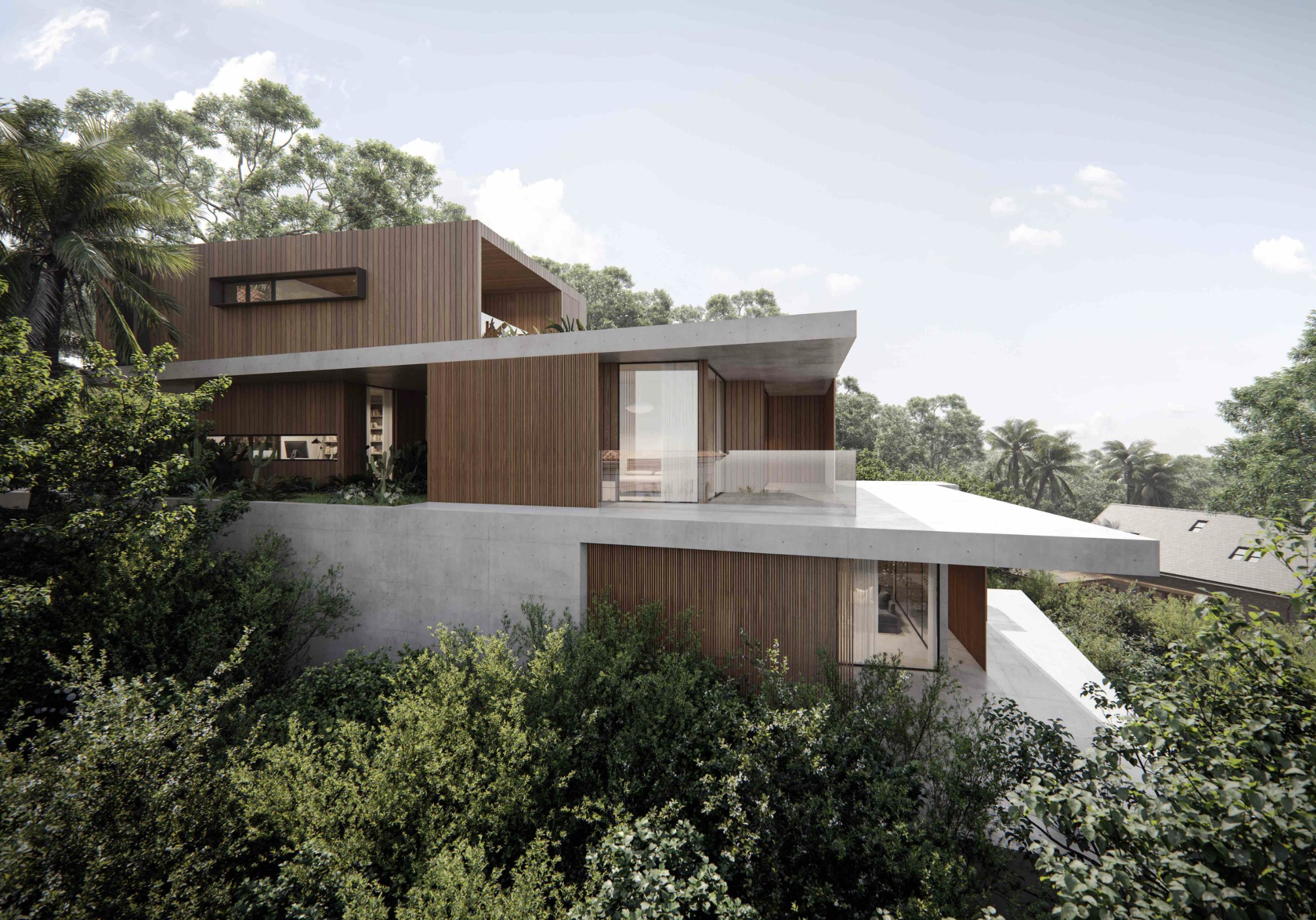
What is the difference between Secondary Dwellings and Dual Occupancies?
When it comes to expanding residential properties in New South Wales (NSW), two popular options are secondary dwellings (often referred to as granny flats) and
Home / Residential Development: Knock-Down Rebuild
Our firm solely serves clients across New South Wales. With a strong history and over 3000 successful projects completed, our team have worked extensively with local council, enhancing project success rates.

When applying for a Development Application (DA) to demolish an existing residential structure and construct a new dwelling, councils require a set of documents tailored to the unique aspects of knock-down rebuild projects. This type of development requires special consideration of site preparation, environmental impacts and compatibility with surrounding properties. Below is an outline of the essential documents for such a project, addressing the specific requirements associated with residential demolitions and new builds.
The Statement of Environmental Effects (SEE) is a core document that evaluates the potential impacts of both the demolition and the construction of the new dwelling. For a knock-down rebuild, the SEE will assess the environmental and social implications of the project, including noise, dust and waste from demolition activities, as well as the visual impact of the new structure on the neighbourhood. This document should address site-specific factors, such as proximity to neighbouring properties, local character and any measures that will be implemented to mitigate impacts on the community and environment.
A Demolition Plan is critical for any knock-down rebuild project, as it outlines how the existing structure will be safely and efficiently removed. This plan includes details of the demolition process, disposal methods for waste materials and any measures to protect neighbouring properties, such as temporary fencing or noise barriers. Councils require this plan to ensure that demolition will be conducted in a controlled manner, minimising hazards to the public and surrounding properties.
The Site Analysis and Design Report provides an overview of the existing site conditions and how the new dwelling will be designed to fit within the context of the surrounding area. This report includes information on site topography, orientation and any significant natural features, such as trees or water bodies, which may impact the design. The design component will address how the new dwelling’s appearance, height and setbacks align with local planning controls, ensuring that the development is in harmony with the existing neighbourhood.
A Survey Plan offers precise measurements of the site, showing the boundaries, topography and any easements or restrictions that may affect construction. For knock-down rebuild projects, the Survey Plan also includes the location of the existing structure to be demolished and the proposed footprint of the new dwelling. This document ensures that the new build complies with boundary setbacks and local zoning requirements, providing a clear basis for the design.
A Construction Management Plan is essential for projects that involve significant building activities on-site. This plan details how construction will be managed, including site access, material storage and safety measures to protect workers and the public. It should also outline working hours, dust and noise control strategies and traffic management during construction. Councils require this plan to ensure that construction activities will be conducted with minimal disruption to the surrounding community.
A Landscape Plan is often required to demonstrate how the outdoor areas of the new dwelling will be designed and integrated with the building. This plan includes details on plant selections, garden beds, tree retention or removal and outdoor features like patios or paths. The council will assess the Landscape Plan to ensure that it enhances the property’s visual appeal, contributes to local biodiversity, and meets any requirements for green space.
A Stormwater and Drainage Management Plan is essential for any new dwelling to ensure that rainwater runoff is effectively managed on-site. This plan details how stormwater will be collected, treated, and directed away from the property to avoid flooding and soil erosion. It may include drainage infrastructure such as rainwater tanks, swales or retention basins, particularly if the site has specific drainage challenges due to its slope or proximity to water bodies.
An Erosion and Sediment Control Plan is critical for knock-down rebuild projects, especially where site clearing or excavation is involved. This plan outlines measures to prevent soil erosion and manage sediment runoff during both the demolition and construction phases. Techniques might include silt fences, sediment basins, or temporary ground covers to stabilise exposed soil. Councils use this plan to verify that the project will not adversely affect nearby water systems or contribute to soil degradation.
For knock-down rebuilds, councils may request additional documents or reports depending on the site’s characteristics, environmental sensitivity, or proximity to other properties.
Bushfire Assessment Report
If the property is in a bushfire-prone area, a Bushfire Assessment Report will be required to evaluate the fire risks and suggest mitigation measures. This report may recommend using fire-resistant materials, creating defensible zones around the dwelling, and ensuring accessible routes for emergency services.
Geotechnical Report
For sites with challenging soil conditions or slopes, a Geotechnical Report may be necessary. This report assesses soil stability and the suitability of the land for construction, recommending measures such as reinforced foundations, retaining walls, or specific footing designs to ensure the new dwelling’s structural integrity.
Arborist Report
If there are significant trees on or near the site, an Arborist Report may be needed to evaluate their health and structural stability. The report will advise on whether certain trees should be preserved or removed and recommend protection measures for any retained trees to prevent damage during demolition and construction.
Acoustic Report
For knock-down rebuilds in noise-sensitive areas or if the new dwelling includes noisy equipment (such as HVAC systems), an Acoustic Report may be required. This report evaluates potential noise impacts and recommends mitigation strategies to minimise disturbance to neighbours, such as sound barriers or strategic placement of noise-generating equipment.
Heritage Impact Statement
If the site is located within a heritage area or near heritage-listed properties, a Heritage Impact Statement may be required. This report assesses how the demolition and new build will affect the heritage values of the surrounding area and suggests ways to preserve architectural integrity, such as maintaining a similar facade style or respecting traditional setback distances.
Flood Risk Assessment
If the property is located in a flood-prone area, a Flood Risk Assessment will be essential. This report evaluates flood risks and outlines mitigation measures, such as elevating the dwelling above the flood level, installing flood barriers, or improving drainage around the property. Councils require this report to ensure the new dwelling is safe and resilient against flooding.
Sustainability Report
A Sustainability Report may be requested if the new dwelling is intended to include environmentally friendly features. This report could cover plans for energy-efficient systems, sustainable materials, water-saving measures, and waste reduction strategies, ensuring that the dwelling minimises its environmental footprint.

When it comes to expanding residential properties in New South Wales (NSW), two popular options are secondary dwellings (often referred to as granny flats) and

In New South Wales (NSW), the approval requirements for tiny homes, moveable dwellings, cabins and affordable housing vary based on factors such as the type

Renovating a property in New South Wales (NSW) that is heritage-listed or located within a heritage conservation area requires careful planning to preserve its historical

Undertaking demolition work on your property in New South Wales (NSW) requires careful planning and adherence to regulatory requirements to ensure safety and compliance. Here’s

When planning to change the use of a commercial property in New South Wales (NSW), understanding the parking requirements is vital for compliance with local

When embarking on a development project, you may wonder whether you need an architect, a town planner, or both. Each professional brings unique expertise to




Guaranteed Approval. Free 30-minute Expert Consult
Our head office is based at Level 1, 1-5 Link Road, Zetland NSW